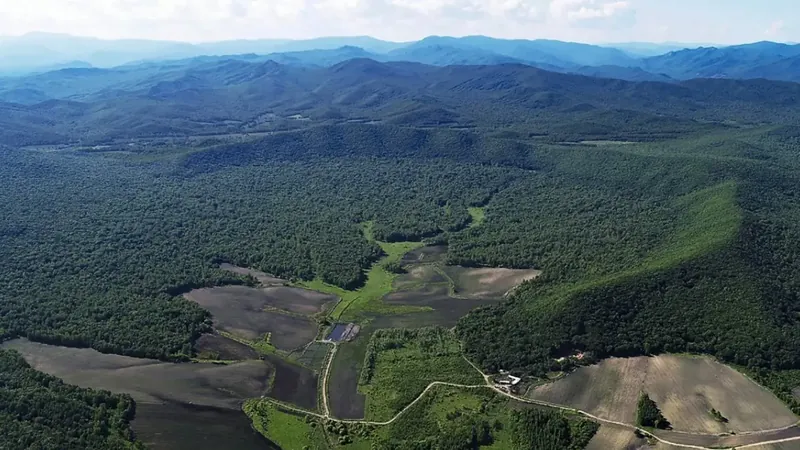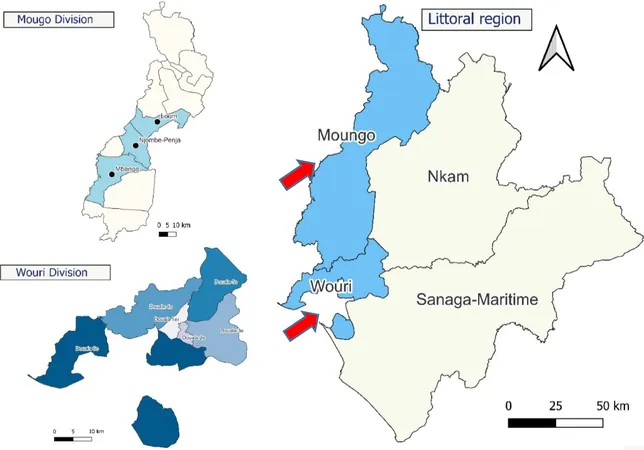
Unveiling the Secrets of Yilan Crater: A Meteorite Impact Reconstructed!
2025-05-18
Author: Wei
The History of Earth Shaped by Asteroids
For billions of years, violent asteroid impacts have sculpted Earth's surface, leaving behind a fascinating array of craters. Among these geological wonders is the Yilan Crater in northeastern China, measuring 1.85 kilometers (1.14 miles) in diameter. This relatively young structure was formed by a meteorite strike during the Late Pleistocene.
Shocking Discoveries Beneath Lake Sediments
Hidden beneath layers of lake sediments, the crater reveals its secrets through distinct shock signatures such as fractured granite, melt features, and high-pressure minerals—all clear indicators of an intense hypervelocity impact. Radiocarbon dating of charcoal found in the infill reveals that this catastrophic event occurred about 49,000 years ago, marking Yilan as China's second confirmed impact site following the Xiuyan Crater.
Seismic Sensors Illuminate the Crater's Interior
Until recently, in-depth geophysical exploration of the Yilan Crater was lacking. In 2023, a team of researchers installed a network of seismic sensors to delve into the crater's subsurface. By monitoring ambient ground vibrations and seismic waves from distant earthquakes, they successfully mapped the interior structure of the crater.
Mapping the Mystery Below
To visualize what lies beneath, a grid of seismic sensors was meticulously placed across the crater. Their analysis utilized cutting-edge techniques like ambient noise tomography and Horizontal-to-Vertical Spectral Ratio (HVSR). The results unveiled a distinctive bowl-shaped structure characterized by slower seismic wave velocities, signifying a thick layer of loose materials and fractured rock.
The Ground That Shook
Ground vibrations were significantly stronger near the crater's center—up to ten times more than in surrounding areas. This variability indicates that the loose, fragmented material within the crater responds to seismic waves differently compared to the solid rock beneath, reaffirming the crater's impact origin.
Decoding the Impact: What Was It?
To determine the nature of the object that created the Yilan Crater, scientists ran simulations, adjusting parameters such as size, speed, and entry angle. These explorations revealed that various combinations could create a crater of this size, consistently yielding an impact energy ranging between 0.75 and 2 x 10^17 joules. The most plausible scenario features a mid-sized rocky object striking the Earth at a 45-degree angle, delivering approximately 1 x 10^17 joules of energy—comparable to a magnitude 5.5 earthquake.
A Significant Impact in Earth's Recent History
While the Yilan impact pales in comparison to the catastrophic Chicxulub event that marked the end of the dinosaurs, it was nonetheless more powerful than the famed Meteor Crater in Arizona. The blast would have had dramatic environmental repercussions in the surrounding areas.
Impact on the Mega Fauna
The timing of the Yilan impact—approximately 49,300 years ago—aligns with the existence of megafaunal species like mammoths in the region. Fossils found in northeastern China, dating from 48,000 to 42,000 years ago, raise intriguing questions about whether the strike influenced local extinction or migration patterns, providing fertile ground for further interdisciplinary exploration.
Revolutionizing Impact Crater Studies
Research like this fills critical knowledge gaps regarding smaller impact craters, which often go unnoticed due to erosion or burial. Yilan Crater stands out for its preservation and accessibility, making it a valuable reference for scientists studying similar features on the Moon, Mars, and beyond.
Harnessing Passive Seismic Methods for Insights
This study illustrates the effectiveness of combining passive seismic methods with modeling to explore craters, especially in regions where active surveys may not be feasible. Even low-frequency ground noise can unveil critical details about the subterranean mysteries that lay hidden beneath our feet.





 Brasil (PT)
Brasil (PT)
 Canada (EN)
Canada (EN)
 Chile (ES)
Chile (ES)
 Česko (CS)
Česko (CS)
 대한민국 (KO)
대한민국 (KO)
 España (ES)
España (ES)
 France (FR)
France (FR)
 Hong Kong (EN)
Hong Kong (EN)
 Italia (IT)
Italia (IT)
 日本 (JA)
日本 (JA)
 Magyarország (HU)
Magyarország (HU)
 Norge (NO)
Norge (NO)
 Polska (PL)
Polska (PL)
 Schweiz (DE)
Schweiz (DE)
 Singapore (EN)
Singapore (EN)
 Sverige (SV)
Sverige (SV)
 Suomi (FI)
Suomi (FI)
 Türkiye (TR)
Türkiye (TR)
 الإمارات العربية المتحدة (AR)
الإمارات العربية المتحدة (AR)